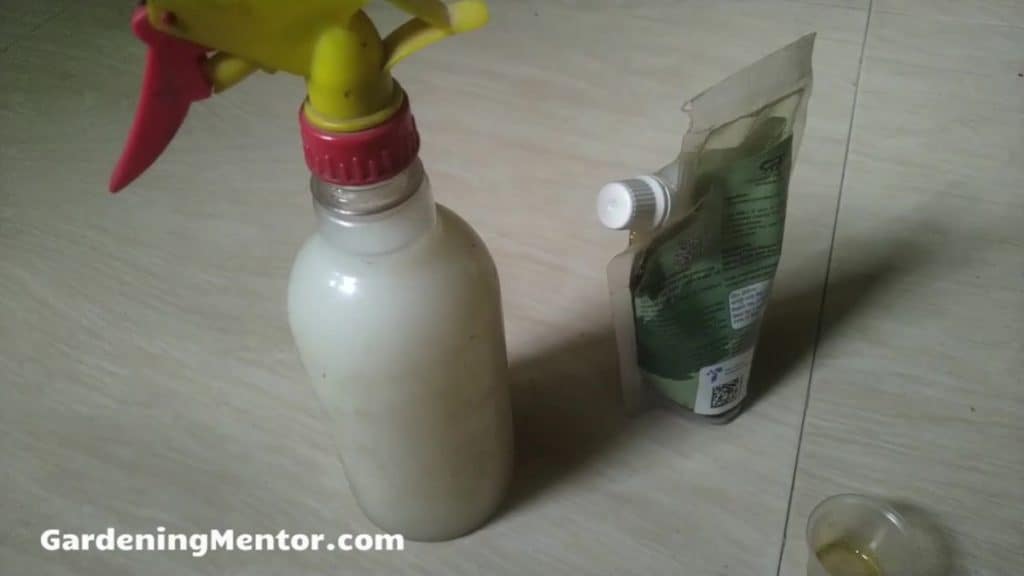I was growing some peas in my garden and while harvesting I found some of them were covered with powdery mildew.
You cannot eat peas with powdery mildew because the fungus can cause allergy in some people and cause a severe reaction. The powdery mildew may affect the flavor of the peas as well.
If you accidentally eat some peas with powdery mildew you don’t need to worry as a little won’t affect most people. Some people may get an allergic reaction. So if you do find some allergic symptoms, immediately consult a doctor.
How to get rid of powdery mildew on pea plants?
If there are only a few leaves or peas affected by powdery mildew, you can cut them off from the plant and dispose of them. But if there are plenty of leaves and peas affected, you need to try alternative methods.
The simplest way to get rid of powdery mildew is to use a homemade fungicide. This could be made using materials like baking soda or garlic mixed with water.
Too much of such a spray can affect the plant so make sure to use them in moderation and every few days. It’s also best to alternate between different types of remedies so the spores don’t develop resistance.
You should test the homemade spray on a few leaves to check if there are any issues. If there is no visible problem after 24 hours, you can use the spray on the entire pea plant affected by powdery mildew.
Mix the ingredients well and pour the mixture into a spray bottle. You can spray the homemade spray every week on the infected parts of the pea plants.
Baking soda spray
You can make this spray by mixing 1 tablespoon of baking soda, 1 tablespoon of vegetable oil, and 1 teaspoon of dish soap in a gallon of water.
Vinegar spray
Mix 3 tablespoons of vinegar with 1 gallon of water and add to a spray bottle.
Garlic spray
Take 5 cloves of crushed garlic and add them to a gallon of water. Keep this mixture for 24 hours and then dispose of the garlic. Put the mixture in a spray bottle.

What are some ways to prevent powdery mildew?
The common reason why powdery mildew affects plants is because of humid conditions. If you want to prevent this fungus, try keeping your pea plants away from humidity.
Prevent splashing water on the foliage
The most common reason for humid conditions near your plant is splashing water on the foliage. You should be careful and only water the base of the plant.
Use a watering can instead of a garden hose when watering your plants. It’s even better if you can use a drip-irrigation system or soaker hose to water the pea plants.
These systems will trickle water in the soil near the base of the plants and prevent water from touching the foliage.

Provide sufficient growing space to the plants
Another reason why your pea plants may suffer from humid conditions is a lack of growing space. If you plant seedlings very close to each other, they will start crowding.
The plants will grow close to each other and prevent good air circulation and sunlight through the foliage. This develops a humid condition that attracts powdery mildew. You want to keep at least 2-3 inches of space between each of the pea plants.
Protect your pea plants from stress
If your pea plants are under stress, they have a higher risk of getting attacked by pests and diseases. Powdery mildew is one of these diseases that can affect them.
You want to provide a sufficient amount of water to the plants. It has to neither be too much nor too little. It’s best to inspect the plants every morning for moisture in the soil.
Stick your finger 1-2 inches into the soil to check for moisture. If the tip of your finger feels dry, it’s time to give good watering to the pea plants.
Peas need full sunlight which means at least 6-8 hours every day. If the plant does not get the required sunlight it will get stressed.
Make sure to grow peas in an area of the garden that gets the required sunlight. Remove any branches that may obstruct the light on the plants.
If a wall or fence is obstructing the light, you’ll need to move the pea plants to another location in the garden.
Peas are a cool-season plant so it’s best to grow them when the temperature is between 55 degrees to 75 degrees. The ideal weather will be early spring or fall depending on your region.
If the temperature goes below 50 degrees or beyond 75 degrees, the pea plants will come under stress. And become susceptible to diseases.

Fact Checked, Written, and Published by Kevin Rodrigues
Kevin is the founder of Gardening Mentor, a website that aims to teach people to grow their own food in a limited space. As a self-taught gardener, Kevin has spent several years growing plants and creating gardening content on the website. He is certified in Home Horticulture and Organic Gardening from Oregon State University. He has a Post Graduate Diploma in Horticulture and Landscape Gardening from Mumbai University.
Read more
